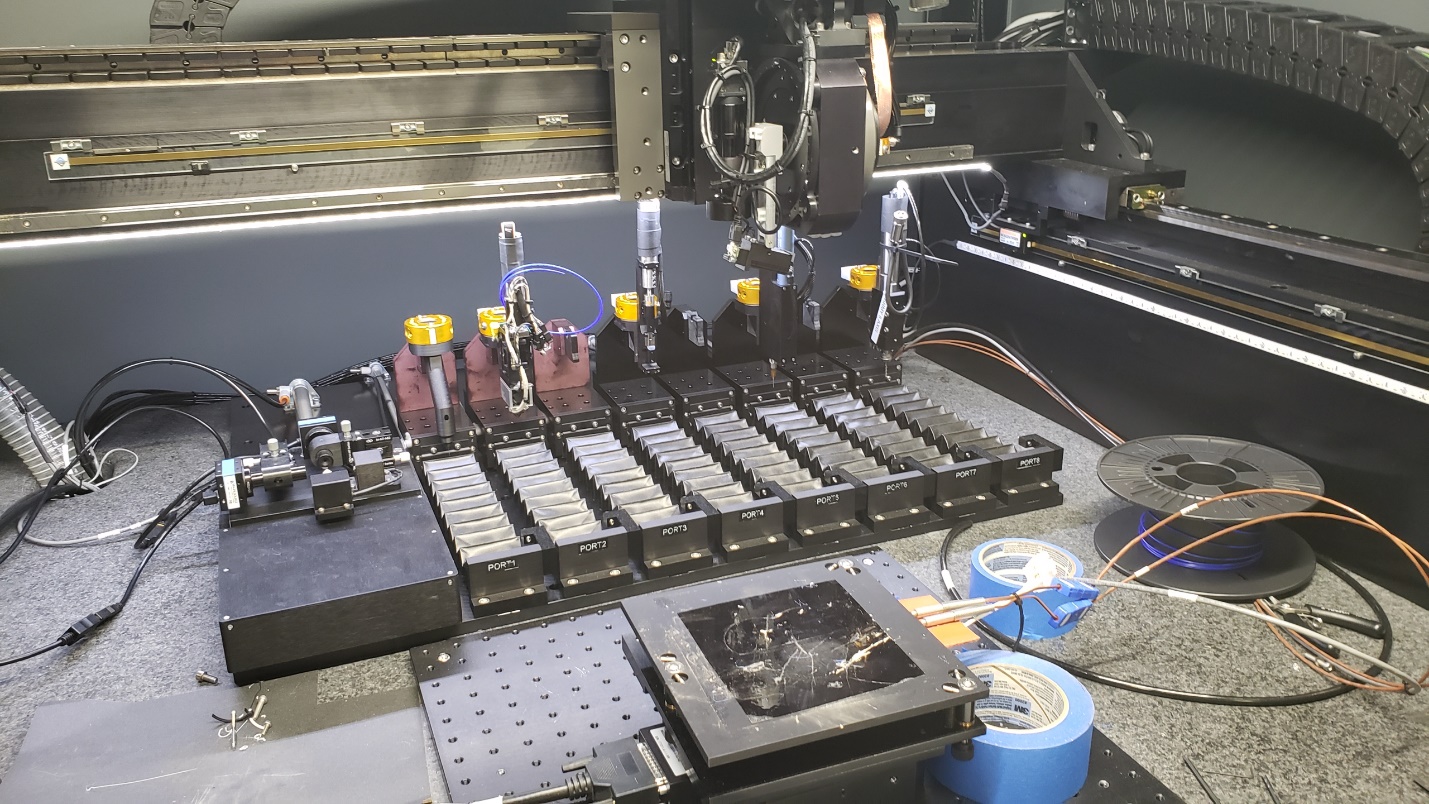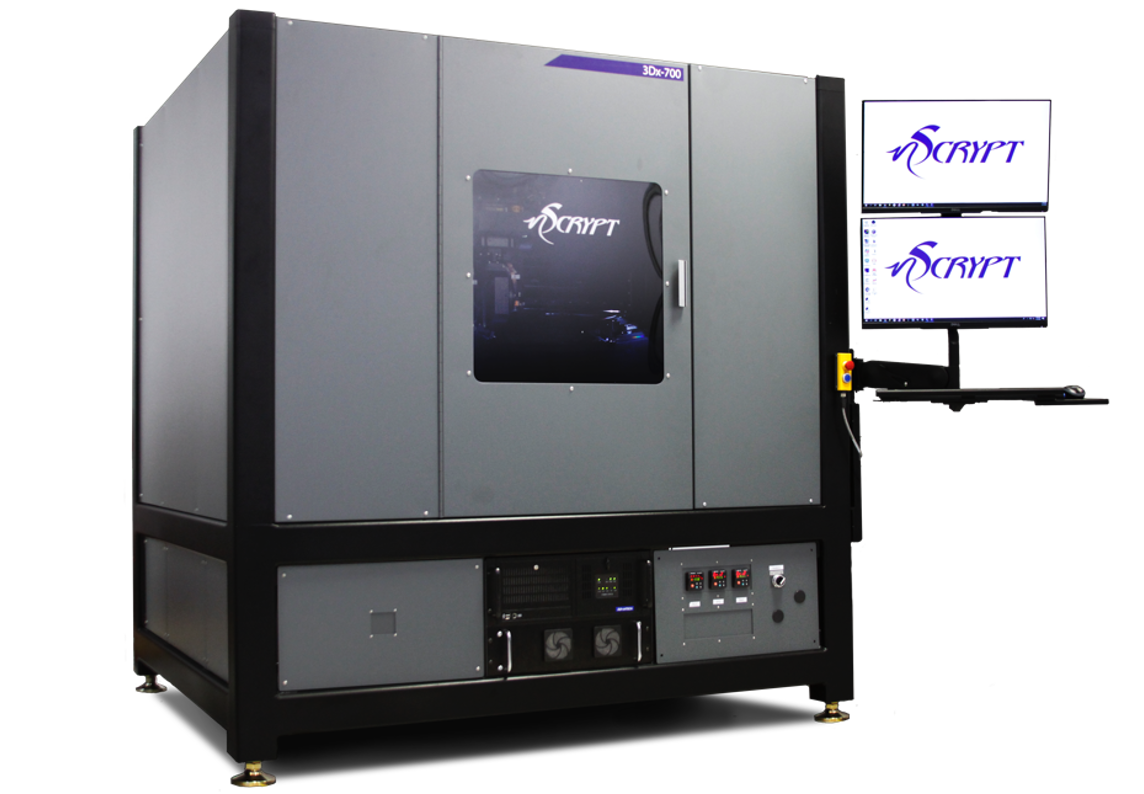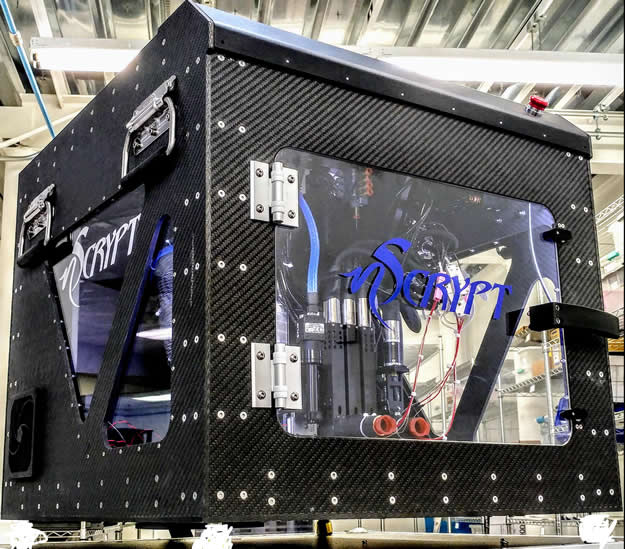What are the 3D printing trends to watch in 2022? Read insights and analysis from over 40 additive manufacturing experts.
Florida-based microdispensing specialist nScrypt’s research arm, Sciperio, has been granted a US patent for a personalized electronic therapeutic training device of which some or all of the device, circuitry, and sensors are 3D printed.
The wording of the US patent (no. 10,926,1136) is “Health Monitoring with 3D Printed Sensors”, and covers not only the device itself, but also how it communicates data in real-time to a video game for therapeutic training, as well as the device’s method of performing personalized therapy and tracking training data.
The device in question could take the form of a personalized oro-motor device, brace, wrap, bandage, or skin applique, with medication or motion inducers able to be 3D printed onto the device and dispensed to the patient.
“This patent is an example of the great things 3D manufacturing can do; making complete, mechanically and electrically functioning wireless devices, with minimal labor, that never existed before and that couldn’t exist before because of the limits of traditional manufacturing,” said Dr. Ken Church, CEO of nScrypt and Sciperio.
“We can now make devices that are highly customized in what they can do and highly personalized to the patient, for highly individualized observation, feedback, training, therapy, or rehabilitation.”

Factory in a Tool electronics 3D printing
nScrypt has continued to build a reputation for itself in the microdispensing space with its Factory in a Tool (FiT) 3D printers, which are designed to provide an all-in-one manufacturing engine with 3D printing, milling, polishing, pick-and-place, and post-processing capabilities.
The firm’s portfolio includes its 3Dn Series, 3Dn-DDM Series, and nRugged systems, which are all compatible with nScrypt’s entire tool head suite, including its SmartPump. This functionality makes its systems well suited for production applications within electronics, defense, aerospace, energy, and bioprinting.
Last year, nScrypt continued to build on the capabilities of its microdispensing technology through achieving 6-axis 3D printing with its 3Dn-Axis FiT 3D printer. This functionality provides nScrypt’s users with a new level of geometric control when designing parts. Shortly afterward, the firm released its new 3D printing machine control software, nStudio, which offered improved user-friendliness alongside several advanced features, and in September, announced a new ability to 3D print multi-axis electronics onto curved and irregular surfaces.

nScrypt’s new patent
The electronic therapeutic training device covered by nScrypt’s new US patent can be highly personalized to fit an individual patient in terms of size, shape, and sensor shape and positioning. This is achieved by 3D printing some or all of the device, its circuitry, and its sensors according to a 3D model of a patient.
Potential devices covered by the patent include customized oro-motor devices, which primarily aid speech, chewing, and biting, as well as braces, wraps, bandages, and skin appliques such as medicine-dispensing patches.
The patent also covers the device’s method of performing therapy through measuring the patient, allowing for the device to be customized to the patient by means of additive manufacturing, and by using data from the device in a video game scenario for therapy training.
Data can also be obtained and sent from a database of patient data to determine whether training thresholds are met, and to send alerts when they are. Additionally, the device’s data can be analyzed by comparing data from different patients using a data mining process.
“By making devices that exactly fit the specific area of a patient’s body where therapy is needed, such as inside the mouth, therapists and trainers can use very specific strategic sensing for training and therapy,” said Church.
The patent, which features four independent claims and 16 dependent claims, further covers a method of tracking and comparing therapeutic training for chewing, bending, or twisting by leveraging data from a personalized 3D printed oro-motor mouthpiece. The mouthpiece contains an intelligent sensor system and data-mined oro-motor data, physical therapy data, or real-time medication release data.
nScrypt’s new patent is available for licensing under “mutually favorable” terms, Church explains: “We want to see printed electronics and 3D manufacturing move forward as an industry, with innovation lifting all boats, without patents getting in the way.”

The rise of 3D printed electronics
While still in its early stages, the field of 3D printed electronics field has given way to numerous innovative developments in recent months. In line with this progress, the likes of nScrypt and several others are seeking to establish themselves as leaders in the space.
Electronics 3D printer manufacturer Nano Dimension is one of them, having recently made significant progress with the unveiling of its DragonFly IV system and FLIGHT software platform, after partnering with Fraunhofer IPA to advance freeform printing capabilities. Most recently, the firm acquired Global Inkjet Systems in a deal worth up to £28.8 million with intentions to upgrade its product line.
Elsewhere, the likes of industrial 3D printer manufacturer Optomec has received a $2 million order from a leading electronic systems manufacturer in the aerospace and defense sectors for six of its Aerosol Jet 3D Electronics printers. The company recently developed the capabilities of its Aerosol Jet Printing (AJP) technology through patenting a UV illumination technology, enabling the more precise production of 3D microstructures.
Another player in the 3D printed electronics space is Neotech AMT, which is currently further developing its “fully additive” electronic devices and working on a scalable 3D printing process for 4D mechatronic systems.
Subscribe to the 3D Printing Industry newsletter for the latest news in additive manufacturing. You can also stay connected by following us on Twitter and liking us on Facebook.
Looking for a career in additive manufacturing? Visit 3D Printing Jobs for a selection of roles in the industry.
Subscribe to our YouTube channel for the latest 3D printing video shorts, reviews and webinar replays.
Featured image shows nScrypt’s nRugged 3D printer. Photo via nScrypt.


